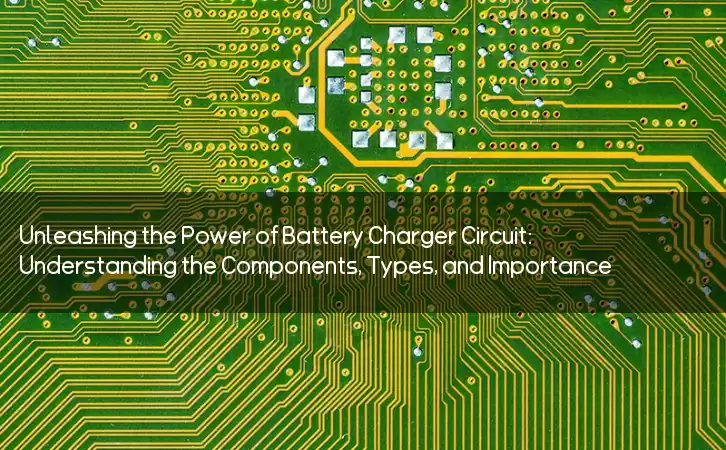Information Center
Unleashing the Power of Battery Charger Circuit: Understanding the Components, Types, and Importance
Published:2023-07-18 10:33:02 Author:Green WCND Views:47A battery charger circuit is an electronic system designed to recharge a depleted battery. The circuit is constructed using a variety of components such as diodes, capacitors, transformers, transistors, and resistors that work together to regulate the flow of electricity and prevent damage to the battery.

The heart of the battery charger circuit is the transformer, which acts as a power supply to deliver the necessary voltage and current required to charge the battery. The transformer is responsible for converting the higher voltage and lower current supply from the main outlet into lower voltage and higher current output required to charge the battery. This conversion is achieved by a process called "step-down" voltage conversion, which is determined by the ratio of the number of turns in the primary and secondary windings.

The diode is another crucial component in the circuit. It ensures that the charging current flows in only one direction and prevents the battery from discharging during the charging process. The diode acts as a one-way valve, allowing the current to pass through it only in one direction, from the transformer to the battery.
The capacitor is also an essential component of a battery charger circuit. It is used to smooth out the voltage and remove any ripple that may occur in the output from the transformer. The capacitor works by storing electrical charge temporarily and smoothing out fluctuations in the voltage waveforms.
In addition to the transformer, diode, and capacitor, transistors and resistors are also used in the battery charger circuit. The transistor acts as a gatekeeper and regulates the voltage and current going to the battery. The resistor regulates the charging current, limiting it and preventing overcharging, which can damage the battery.
There are different types of battery charger circuits, including linear chargers and switching chargers. Linear chargers use a simple design and are cheaper to construct, but they generate a significant amount of heat during the charging process. On the other hand, switching chargers use advanced circuits and are more efficient and can handle higher power outputs.
In conclusion, the battery charger circuit is essential for recharging batteries that have been depleted of power. The components in the circuit work together to regulate the flow of electricity and prevent damage to the battery. Depending on the design, there are different types of battery charger circuits available, each with its advantages and disadvantages. Regardless of the type of battery charger circuit used, it is crucial to ensure that battery charging is done safely and correctly to avoid damage to the battery or any associated electronic devices.
The battery pack is the heart of a golf cart, silently powering every acceleration and climb on the green. However, battery degradation often goes unnoticed, mu···
The battery pack is the heart of a golf cart’s power system, yet maintaining it has long been a challenge for technicians. Traditional troubleshooting methods—···
For golf course managers, ensuring smooth and efficient operations is crucial for providing a memorable experience for golfers and maintaining the reputation of···
A battery tester ensures golf course cart batteries operate efficiently and reduces downtime through the following ways:I. Precise Battery Condition DiagnosisOp···





